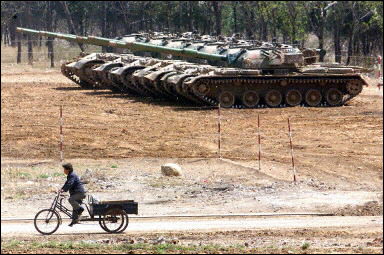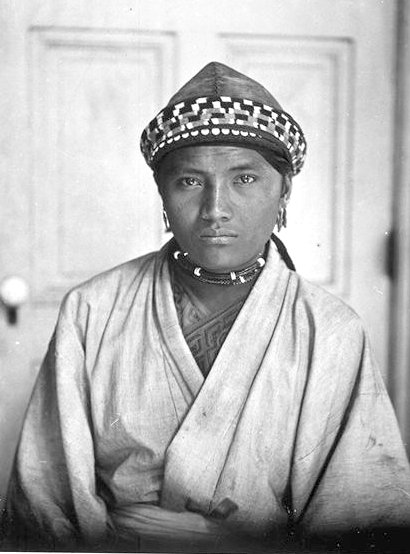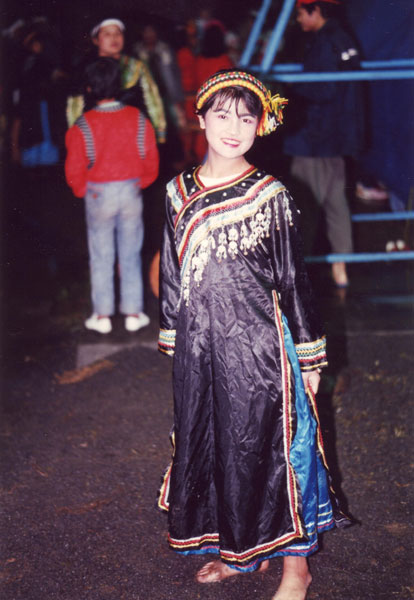When I first started mentioning the country “Taiwan” to people as a travel destination possibility, some of the first comments I was offered was, “Don’t call them Chinese, they’re very proud to be Taiwanese.”
And my immediate thoughts were, “As they should be.” Having done a fair amount of research for a dramaturgy project in university involving Serbia-Kosovo relations, I could relate to the idea of a separatist nation from a larger nation. However, this was an uneducated view: I’ve never learned about Taiwanese-Chinese relations, in high school or university. No classes I took in either institution allowed me the opportunity to learn the famous five W’s: who, what, when, where, and why. As a recent university graduate who hasn’t shaken the desire to learn just yet, I used my trusty Google to find out.
In doing so, I discovered that there is so much information that it can barely be condensed. Look for Part 2 in an upcoming entry.

Image from dismalworld.com
I found a particularly excellent, albeit slightly outdated link from PBS on the history of the Chinese-Taiwanese conflict. It’s short and well explained. To summarize, it began in 1949 when Communist Chinese leader Mao overtook the China mainland, and a revolutionary leader named Chiang Kai-shek escaped to Taiwan – with two million refugees in tow.
Now, this makes me wonder, what of the native people already living in Taiwan? Most articles I came across made little mention of them, and it seems to me their integration with the new surplus of Chinese immigrants is significant.

image from wikipedia.org
The Taiwanese aboriginal people are made up of several different tribes and have a history of about 8,000 years prior to Chinese influence. Much like the Aboriginal societies in Canada and other places in the world where invaders, refugees, or explorers have taken over, they suffer from inadequate education systems and high unemployment rates. The Taiwanese government is trying to change that, much like the Canadian government for its Aboriginal people, but as is the general opinion by many here, the process is going very slowly.
Before the Chinese Han invasions, there were Dutch colonists arriving in the early 1600s, and so the native Taiwanese history has largely been written by the outsider perspective. Following the Dutch came the Spanish, the Chinese, the Japanese, and then Chinese again, which brings us up to 1949 again. As usually happens in such colonization, the intention is to “civilize” these “savages,” much to the detriment of their culture.
One of the cultural aspects that seems to have suffered the most from outside influence would be their language. 10 out of 36 indigenous languages originating in Taiwan are extinct and the rest are in danger of becoming the same. It’s true that, sadly, many languages die all the time, but Taiwan is particularly significant because linguists believe it to be the original starting point of the Austronesian languages.
What the heck are those, you ask?
I’m no linguist so I would feel inadequate answering that incredibly complex question, but just to get an idea of how significant this group of languages is in the world, here is a map to display:

Obviously the key is impossible to read at this size, but the light pink that takes over much of the Indian Ocean islands and Madagascar represents the Austronesian language group. While certainly not the largest chunk of languages, it is still quite significant.
Nowadays, the Taiwanese aboriginal languages remain a secondary but still official language of Taiwan, second to Mandarin Chinese.
When Chiang Kai-shek led his Chinese refugees to Taiwan, the response from the native Taiwanese is unclear. What is clear is that the education was aimed at getting rid of Japanese influence in the culture; the Japanese had just ended their rule in Taiwan four years prior. It is confusing to me as to why the education was so proudly steeped in KMT ideas (Kuomintang, or the Chinese National Party), especially considering that I’m under the impression that Chiang Kai-shek was fighting the KMT on mainland China. More on that when I do some more research later on Chiang Kai-shek versus Mao.
The government at first was authoritarian and has slowly turned into a democracy over the years. In the legislative Yuan today, six out of one hundred thirteen seats are held by Aboriginal people. A little over one hundred thousand ethnic Taiwanese people live in Taiwan today.

image from wikipedia.org
It seems as though racism against the Aboriginal people existed then as it does now. Yet some progress has been made: the first native Taiwanese president was elected in 2000, Chen Shui-bian, who at the time called for an independent Taiwan.
Which appropriately brings me right back to the subject of Taiwanese-Chinese relations and the shaky subject of independence. I’ll be writing on more of that in my next entry.
Tags: aboriginal taiwanese, chinese, culture, history, language





